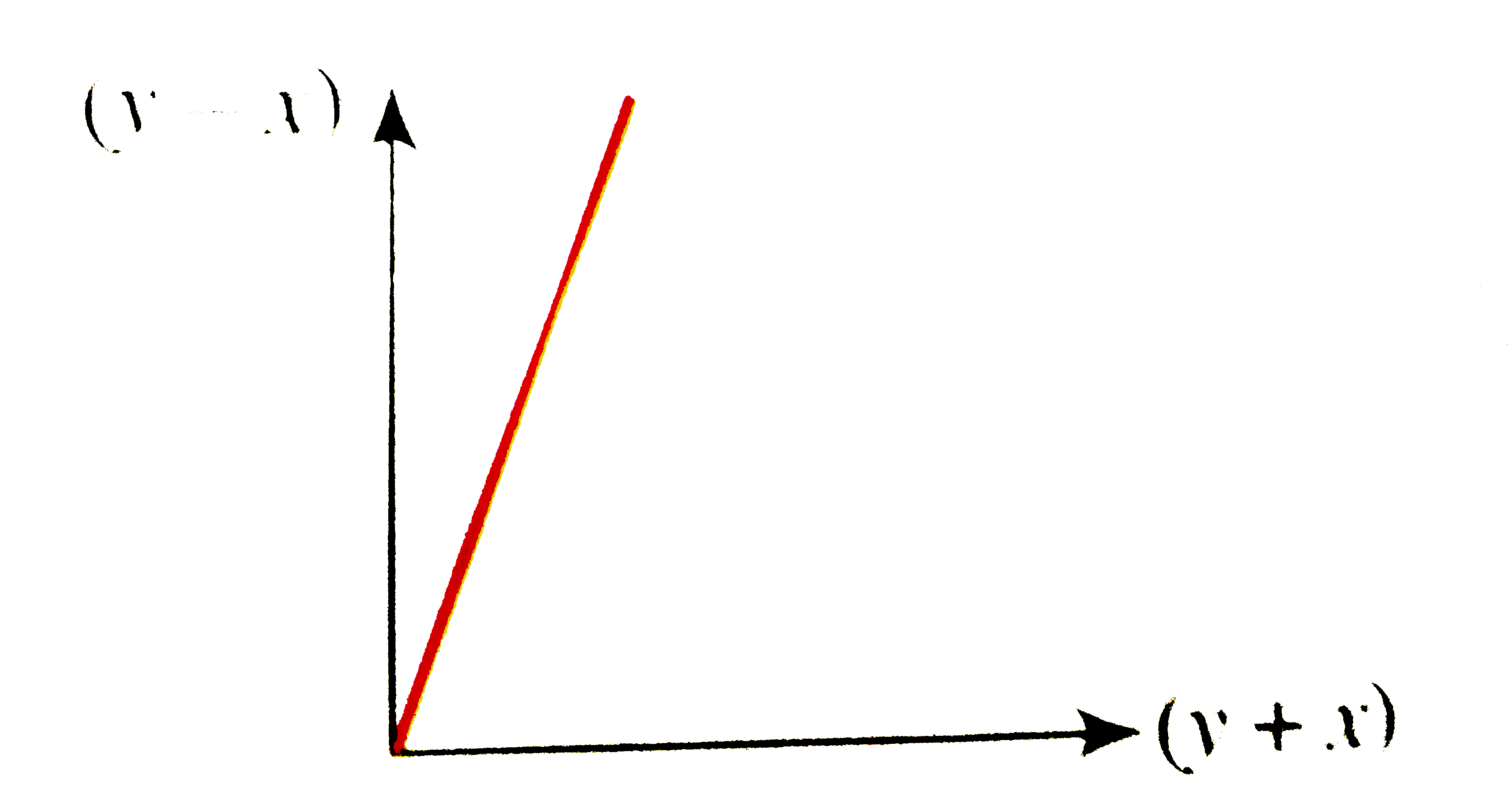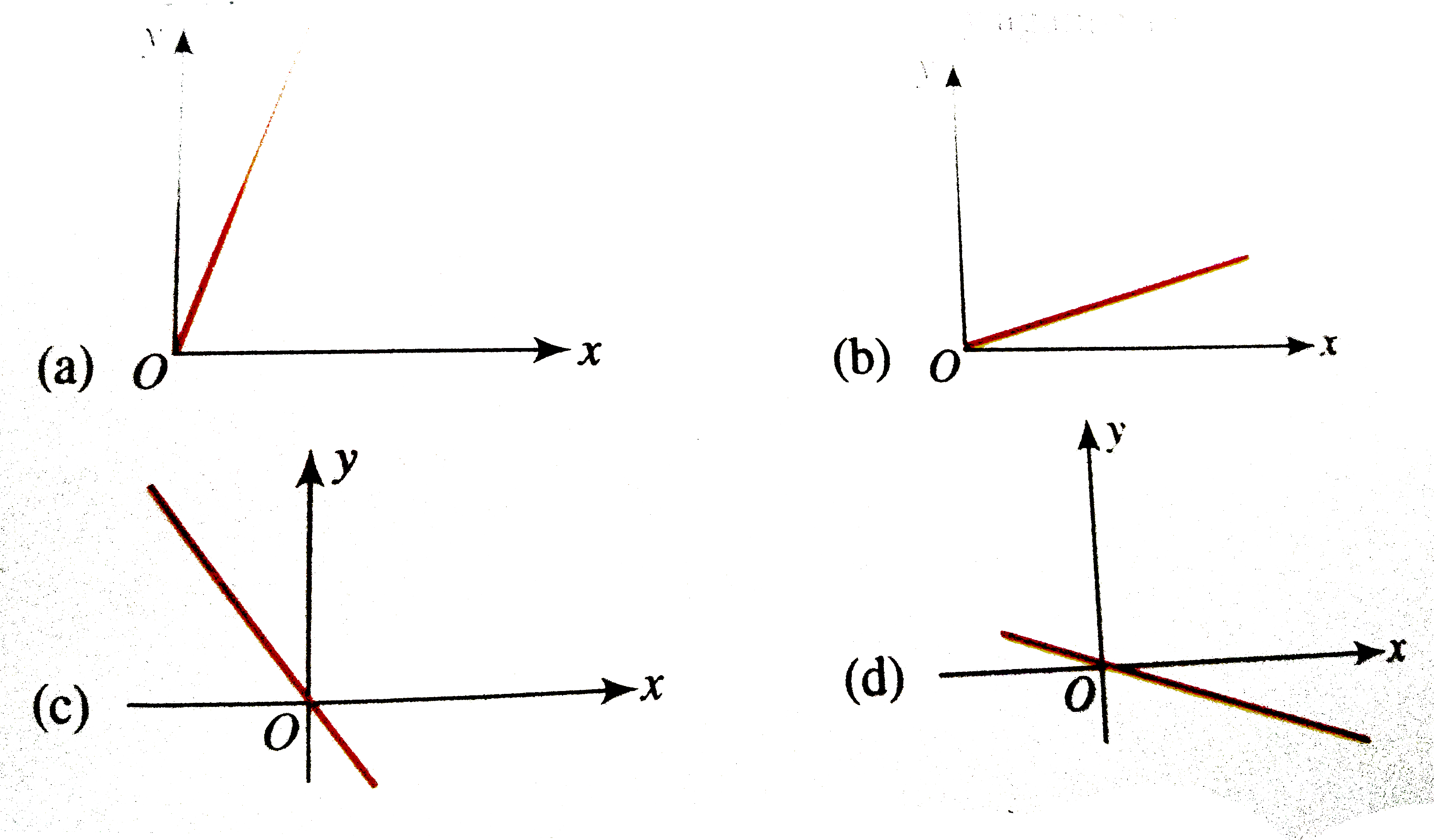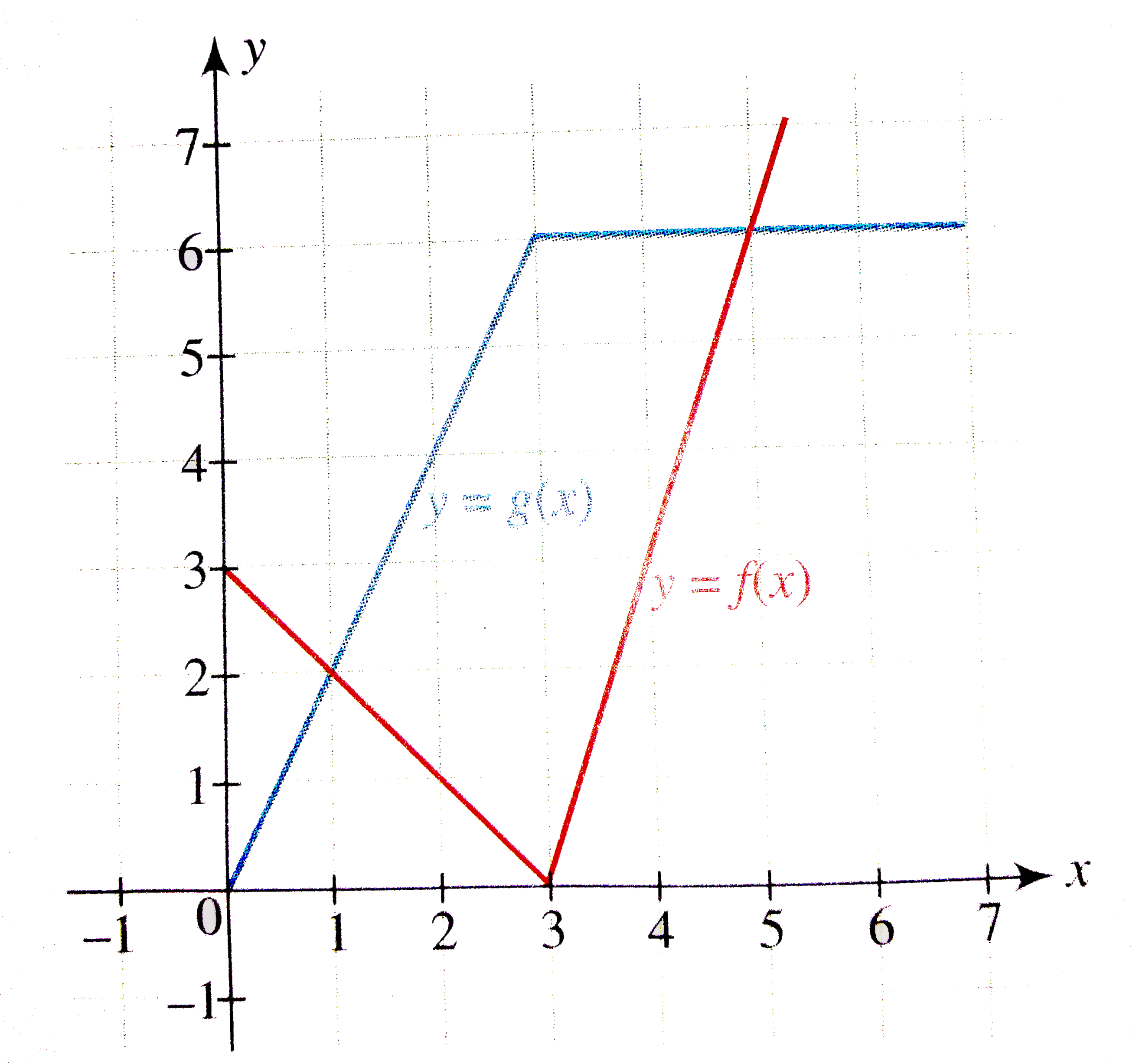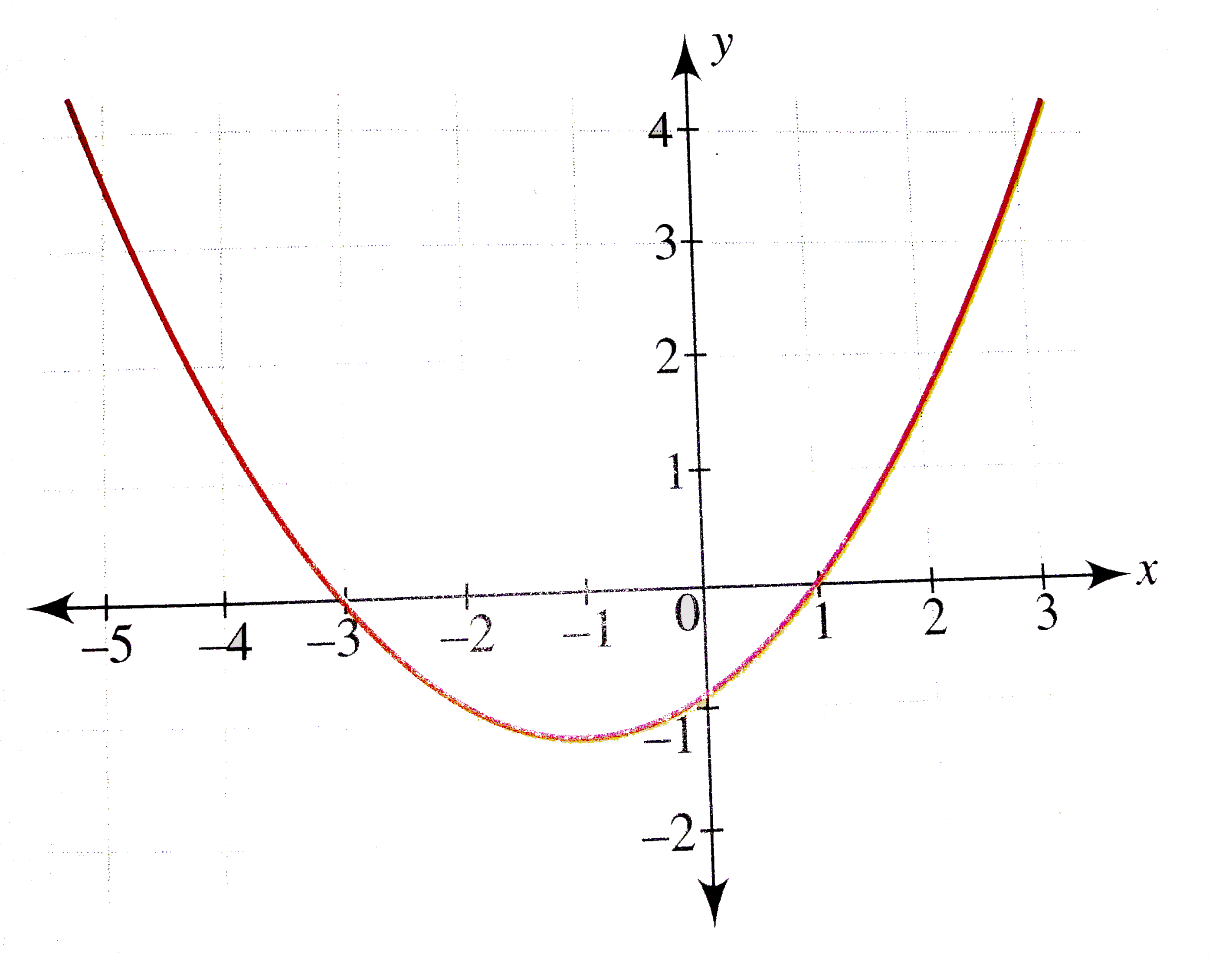Complete Solutions to Illustrations of chapter GRAPHS OF ELEMENTARY FUNCTIONS of Class 12 book with complete answers and questions
| Class 12 | MATHS |
| Chapter | GRAPHS OF ELEMENTARY FUNCTIONS |
| CENGAGE NEW | Illustrations |
| Number Of Questions | 80 |
| Academic Year | 2023-24 |
The graph of `(y-x)` against `(y+x)` is shown below.

Which one of the following shows the graph of `y` against `x` ?
 04:39View Solution
04:39View SolutionDraw the graph of `f(x) = (x^(3)-x)/(x^(2)-1)`.
01:13View SolutionGraph of `y=f(x) and y=g(x)` is given in the following figure. If `h(x)= f(g(x))`, then find the value of `h'(2)`.
 View Solution
View SolutionLet `f((x+y)/2)=(f(x)+f(y))/2` for all real x and y. If f'(0) exists and equals-1 and f(0)=1, find f(2)
06:51View SolutionSketch the regions satisfying the following inequalities:
(a) `x gt 2`
(b) `|y| ge 1`01:14View SolutionShade the regions where points satisfy `|x-y| lt 1`.
02:23View SolutionPlot the region satisfying `|x|+ |y| le 2 and |x|+|y| gt 2`.
View SolutionIf `x lt 2`, then find the values of `x^(2)` graphically.
00:42View SolutionIf `x lt -1`, then find the vallues of `x^(2)` graphically.
01:04View SolutionDraw the graph of `f(x) = {{:(x^(3)","x^(2) lt 1), (x","x^(2)le1):}`
01:07View SolutionIf `x gt 2`, then find the values of `1//x` graphically.
00:56View SolutionIf `x lt -1`, then find the values of `1//x` graphically.
01:27View SolutionWhen `x gt -2`, find the values of `1//x`.
01:04View SolutionWhen `x lt 3`, find the values of `1//x`.
00:58View SolutionDraw the graph of `(1)/(x)+ (1)/(y)=1`.
03:04View SolutionDraw the graph of `y=(1)/(x^(2))`.
01:02View SolutionDraw the graphs of following quadratic functions.
(i) `y=x^(2)+x+1" "` (ii) `y=x^(2)-2x-3`
(iii) `y=2+x-x^(2)" "`(iv) `y=x-1-x^(2)`03:11View SolutionThe following figure shows the graph of `f(x)= ax^(2)+ bx+c`, find the sign of `a, b and c`.
 01:08View Solution
01:08View SolutionLet `f(x)=2x(2-x), 0 le x le 2`. Then find the number of solutions of `f(f(f(x)))= (x)/(2)`.
04:49View Solution`f:R to R` is defined as `f(x)= {{:(x^(2)+kx+3",",,"for "xge0),(2kx+3",",,"for "x lt0):}`. If `f(x)` is injective, then find the values of `k`.
01:59View SolutionIf `f(x)=x^3+4x^2+lambdax+1` is a monotonically decreasing function of `x` in the largest possible interval `(-2,-2/3)dot` Then `lambda=4` (b) `lambda=2` `lambda=-1` (d) `lambda` has no real value
03:44View SolutionFor what real values of `a` do the roots of the equation `x^2-2x-(a^2-1)=0` lie between the roots of the equation `x^2-2(a+1)x+a(a-1)=0.`
06:22View SolutionFind the value of `a` for which `a x^2+(a-3)x+1<0` for at least one positive real `x` .
07:12View SolutionConsider the inequality, `9^(x)-a.3^(x)-a+3 le 0`, where `'a'` is a real parameter.
(a) Find the value of `'a'` for which the inequality has at least one negative solution.
(b) Find the values of `'a'` for which the inequality has at least one positive solution.
(c) Find the vlaues of `'a'` for which the inequality has at least one real solution.View SolutionLet `a ,b ,c` be real. If `a x^2+b x+c=0` has two real roots `alphaa n dbeta,w h e r ealpha<<-1a n dbeta>>1` , then show that `1+c/a+|b/a|<0`
02:39View SolutionIf `b gt a`, then the equation `(x-a)(x-b)-1=0` has
(a) Both roots in `(a, b)` `" "` (b) Both roots in `(-oo, a)`
(c) Both roots in `(b, +oo)` `" "` (d) One root in `(-oo, a)` and the other in `(b, +oo)`View SolutionWhen `x gt -2`, find the values of `|x|` graphically.
00:55View SolutionWhen `x lt 3`, find the values of `|x|` graphically.
00:39View SolutionIf `2 le |x| le 5`, then find the values of x from the graph of `y = |x|`.
00:56View SolutionDraw the graph of `f(x)= (|x-1|)/(x-1)`.
01:07View SolutionDraw the graph of `x+ |y|=2y` and check the differentiability.
01:38View SolutionDraw the graph of `f(x)= (x+2)|x-1|`.
03:02View SolutionDraw the graph of the function `f(x)= x- |x-x^(2)|, -1 le x le 1` and find the points of non-differentiability.
03:40View SolutionSolve : `x^(2)- |x+2|+x gt 0`
02:30View SolutionDraw the graph of `f(x)= |2x-1|+ |2x-3|`. Find the range of the function.
02:00View SolutionDraw the graph of `f(x)= |x|-|2x-3|`. Find the range of the function.
03:07View SolutionLet `f(x)=x + 2|x+1|+2| x-1|`. Find the values of `k` if `f(x)=k`
(i) has exactly one real solution,
(ii) has two negative solutions,
(iii) has two solutions of opposite sign.03:05View Solution`f(x)=|a x-b|+c|x|AAx in (-oo,oo),` where `a >0, b >0,c > 0.` Find the condition if `f(x)` attains the minimum value only at one point.
09:33View SolutionThe tangent to the curve `y=e^x` drawn at the point `(c,e^c)` intersects the line joining `(c-1,e^(c-1)) and (c+1,e^(c+1))` (a) on the left of `n=c` (b) on the right of `n=c` (c) at no points (d) at all points
04:16View SolutionIf a continuous function `f` defined on the real line R assume positive and negative values in R, then the equation `f(x)=0` has a root in R. For example, if it is known that a continuous function `f` on R is positive at some point and its minimum value is negative, then the equation `f(x)=0` has a root in R. Consider `f(x)= ke^(x)-x`, for all real x where k is a real constant.
The line `y=x` meets `y=ke^(x)` for `k le 0` at02:13View SolutionIf a continuous function `f` defined on the real line R assume positive and negative values in R, then the equation `f(x)=0` has a root in R. For example, if it is known that a continuous function `f` on R is positive at some point and its minimum value is negative, then the equation `f(x)=0` has a root in R. Consider `f(x)= ke^(x)-x`, for all real x where k is a real constant.
The line `y=x` meets `y=ke^(x)` for `k le 0` at02:13View SolutionIf a continuous function `f` defined on the real line R assume positive and negative values in R, then the equation `f(x)=0` has a root in R. For example, if it is known that a continuous function `f` on R is positive at some point and its minimum value is negative, then the equation `f(x)=0` has a root in R. Consider `f(x)= ke^(x)-x`, for all real x where k is a real constant.
The line `y=x` meets `y=ke^(x)` for `k le 0` at04:45View SolutionFind the number of solution of `2x^2+3^x+4^x-5^x=0`
03:35View SolutionDraw the graph of `y= log_(x)sqrtx`
01:02View SolutionFind the number of roots of the equation `xlog_(e)x= 1`.
00:45View SolutionIf the graphs of the functions`y= log _(e)x and y = ax` intersect at exactly two points,then find the value of `a`.
03:01View Solutiondraw the graph of f(x)=x+[x], [.] denotes greatest integer function.
02:40View SolutionDraw the graph of the function `f(x) = |(x+ (1)/(2))[x]|, -2 le x le 2`, where `[*]` denotes the greatest integer function. Find the points of discontinuity and non-differentiability.
View SolutionDraw the graph of `f(x) = [x^(2)], x in [0, 2)`, where `[*]` denotes the greatest integer function.
03:14View SolutionDraw the graph of `f(x)= [sqrtx], x in [0, 16)`, where `[*]` denotes the greatest ineger function.
04:29View SolutionDraw the graph of `y= [x]+ sqrt(x-[x])`, where`[*]` denotes the greatest ineger function.
View SolutionDraw the graph of `f(x) = [log_(e)x], e^(-2) lt x lt 10`, where `[*]` represents the greatest integer function.
03:48View SolutionSolve `x^2-4-[x]=0` (where `[]` denotes the greatest integer function).
05:20View SolutionSketch the region of relation `[x] + [y] = 5, x, y ge 0`, where `[*]` denots the greatest integer function.
View SolutionDraw the graph of `f(x) ={2x}`, where `{*}` represents the fractional part function.
02:35View SolutionFind the domain of `f(x) = sqrt (|x|-{x})` (where `{*}` denots the fractional part of x).
02:31View SolutionSolve : `x^(2) = {x}`, where `{x}` represents the fractional part function.
02:07View SolutionDraw the graph of `y^(2)= {x}`, where `{*}` represents the fractional part function.
01:41View SolutionDraw the graph of `y =(1)/({x})`, where `{*}` denotes the fractional part function.
01:27View SolutionSolve : `4{x}= x+ [x]`(where `[*]` denotes the greatest integer function and `{*}` denotes the fractional part function.
04:30View SolutionGiven the graph of the function `y=f(x)`, draw the graph of `y ="sgn"(x)`.
 02:03View Solution
02:03View SolutionDraw the graph of `f(x) = "sgn"(x^(3) -x)`.
03:04View SolutionDraw the graph of `f(x) = "sgn"(log _(e) x)`.
01:02View SolutionLet a function `f(x)` be defined in `[-2, 2]` as
`f(x) = {{:({x}",",, -2 le xlt -1), (|"sgn "x|",",,-1le x le 1),({-x}",",, 1 lt xle 2):}` where `{x}` and sgn `x` denote fractional part and signum functions, respectively. Then find the area bounded by the graph of `f(x)` an the x-axis.03:55View SolutionLet `f: R to R ` be defined as `f(x) = e^("sgn "x)+ e^(x^(2))`. Then find the range of the function, and also indentify the type of the function : one-one or many-one.
02:46View SolutionDraw the graph of the function `f(x) = max. {x, x^(2)}` and write its equivalent definition.
01:48View SolutionLet `f : R to R ` be a function defined by `f(x) = max. {x, x^(3)}`. The set of all points where `f(x) ` is NOT differenctiable is
(a) `{-1, 1}`
(b) `{-1, 0}`
(c ) `{0, 1}`
(d) ` {-1, 0, 1}`02:05View SolutionFind the equivalent definition of `f(x)=m a xdot{x^2,(-x)^2,2x(1-x)}w h r e0lt=xlt=1`
07:44View SolutionLet `f:R-> R and g:R-> R` be respectively given by `f(x) = |x| +1 and g(x) = x^2 + 1`. Define `h:R-> R` by `h(x)={max{f(x), g(x)}, if xleq 0 and min{f(x), g(x)}, if x > 0`.The number of points at which `h(x)` is not differentiable is
06:08View SolutionSketch the region of the points satisfying `max. {|x|, |y|} le 4`.
03:42View SolutionConsider the regions `A= {(x, y)|x^(2) + y^(2) le 100 } and B = {(x, y) |sin (x+y) gt 0}` in the plane. Then find the area of the region `A uu B`.
View SolutionDraw the graphs of the following parabolas :
(i) `x=y ^(2) - 2y -3`
(ii) `x = 6+y -y^(2)`04:15View SolutionFind the number of roots of the equation `e^(x) = sqrt (-x)`
01:02View SolutionLet `g(x)=sqrt(x-2k),AA2klt=x<2(k+1),` where `k in ` integer. Check whether `g(x)` is periodic or not.
04:38View SolutionPlot the region in the first quadrant in which points are nearer to the origin than to the line `x=3.`
08:33View SolutionDraw the graph of `y= sqrt (x^(2)-1)`
01:02View SolutionDraw the graph of `y= -sqrt (6-3x^(2))`
01:00View SolutionThe eccentricity of the ellipse `9x^2+25 y^2-18 x-100 y-116=0` is `25//16` b. `4//5` c. `16//25` d. `5//4`
03:33View SolutionFind the area enclosed by the curves `y= sqrtx and x= -sqrty` and the circle `x^(2) + y^(2) =2` above the x-axis.
05:57View SolutionConsider a square with vertices at `(1,1),(-1,1),(-1,-1),a n d(1,-1)dot` Set `S` be the region consisting of all points inside the square which are nearer to the origin than to any edge. Sketch the region `S` and find its area.
12:21View Solution
Illustrations questions and complete solutions for chapter GRAPHS OF ELEMENTARY FUNCTIONS of CENGAGE MATHS (HINGLISH) of Class 12
